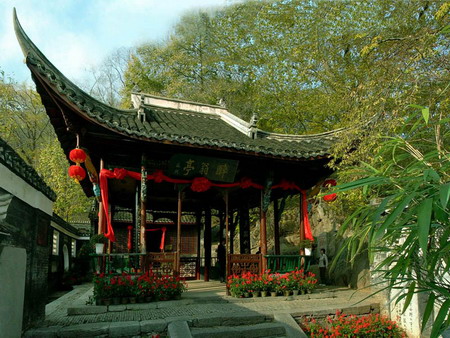
Langya Mountain, three km southwest of Chuzhou City, has rolling peaks, gurgling springs and luxuriant vegetation. It is a national key scenic and historic interest zone and a national forest park.
It is abundant in animal and plant resources. For instance, it is home to 54 species of birds currently under the protection of the Sino-Japanese Agreement of Protecting Migratory Birds. The Langya elm and Zuiweng elm peculiar to Langya Mountain are two of rare tree species in the country; and China's most completely preserved natural secondary forests in a limestone area, a transitional zone from sub-tropical to warm-temperate climate, add to the area's uniqueness.
Apart from these natural resources, the mountain also gathers numerous historical sites, such as the ancient Qingliu Pass, Langya Temple, Pavilion of the Old Drunkard, Fengle Pavilion, Portrait of Goddess of Mercy by Wu Daozi (680-759), a great painter of the Tang Dynasty (618-907), and the stele with the inscriptions of Record on the Pavilion of the Old Drunkard, which was written by Su Shi (1037-1101), a writer and calligrapher in the Song Dynasty (960-1279). The beautiful mountain is not only an ideal place for people to conduct scientific research, revisit their country's history or simply seek a return to nature, but a fine destination for tourists to relax in a beautiful natural and cultural setting.
Source: Anhui Travel Guide
|